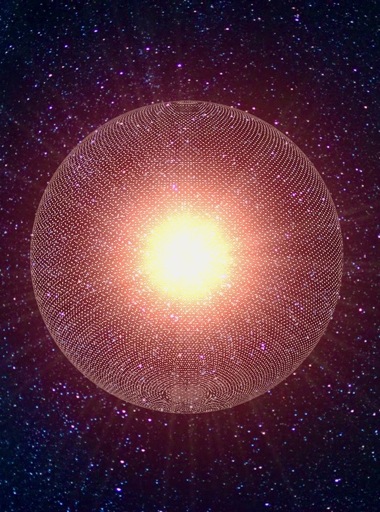A Dyson sphere is a hypothetical megastructure that encompasses a star and captures a large percentage of its power output. The concept is a thought experiment that attempts to imagine how a spacefaring civilization would meet its energy requirements once those requirements exceed what can be generated from the home planet’s resources alone. Because only a tiny fraction of a star’s energy emissions reaches the surface of any orbiting planet, building structures encircling a star would enable a civilization to harvest far more energy.



I don’t remember the math, but you lose return on investment after a certain percentage of coverage.
Dyson Grids are the future!!! 😜
The other “benefit” to the sphere is blacking out a star. Other life, should it exist, is less likely to find the structure. ITT people destroying my dreams of a big shelly boi
I would think it’d make it more likely that you’re discovered when you turn your star into a black ball with a gigantic IR signature where a star should be. Any civilization with a cursory understanding of gravity and stellar spectra would turn every telescope they have on you.
What does IR red shift into over cosmic distances? But it would be just as, if not less, noticeable as a star suddenly dimming to [100%-optimal capture rate]
Deeper IR, microwave and radio. Within a galaxy, redshift can be ignored. In another galaxy, the issue is moot, you don’t need to worry about them and they don’t need to worry about you.
Our current scopes can pick up brown dwarfs with a surface temperature below freezing. An object the diameter of a planetary orbit, with the gravitational effect of a main sequence star and giving off just black body radiation is gonna stick out like a neon “Interesting stuff here!” sign the moment someone does a long wavelength survey of your general region.
Even if you build a swarm instead of a solid shell, you’re still going to shift the star’s apparent spectrum towards IR, from the swarm radiating waste heat. A star whose mass, diameter and emission spectrum don’t match up with the math is inviting investigation, regardless of how you try to mask what you’ve been doing.
The gravity from the star will also still be there regardless of how much of its EM signature is visible outside of the sphere.
Ouh! Love me some “Dark Forest hypothesis” existential dread 😁
Wouldn’t we cook in the end if you don’t let out residual em?
That’s why you build a ringworld instead.
Or DYson Bubbles, which would also “cover” enough “surface” to be viable without needing god knows how many planets’ worth of material
I like the idea of a dyson swarm
It would probably be configured using YAML and require health checks and quorum monitoring. I’m not sure I would want that job, especially on-call shifts. The consequences of downtime would be on a whole other level.